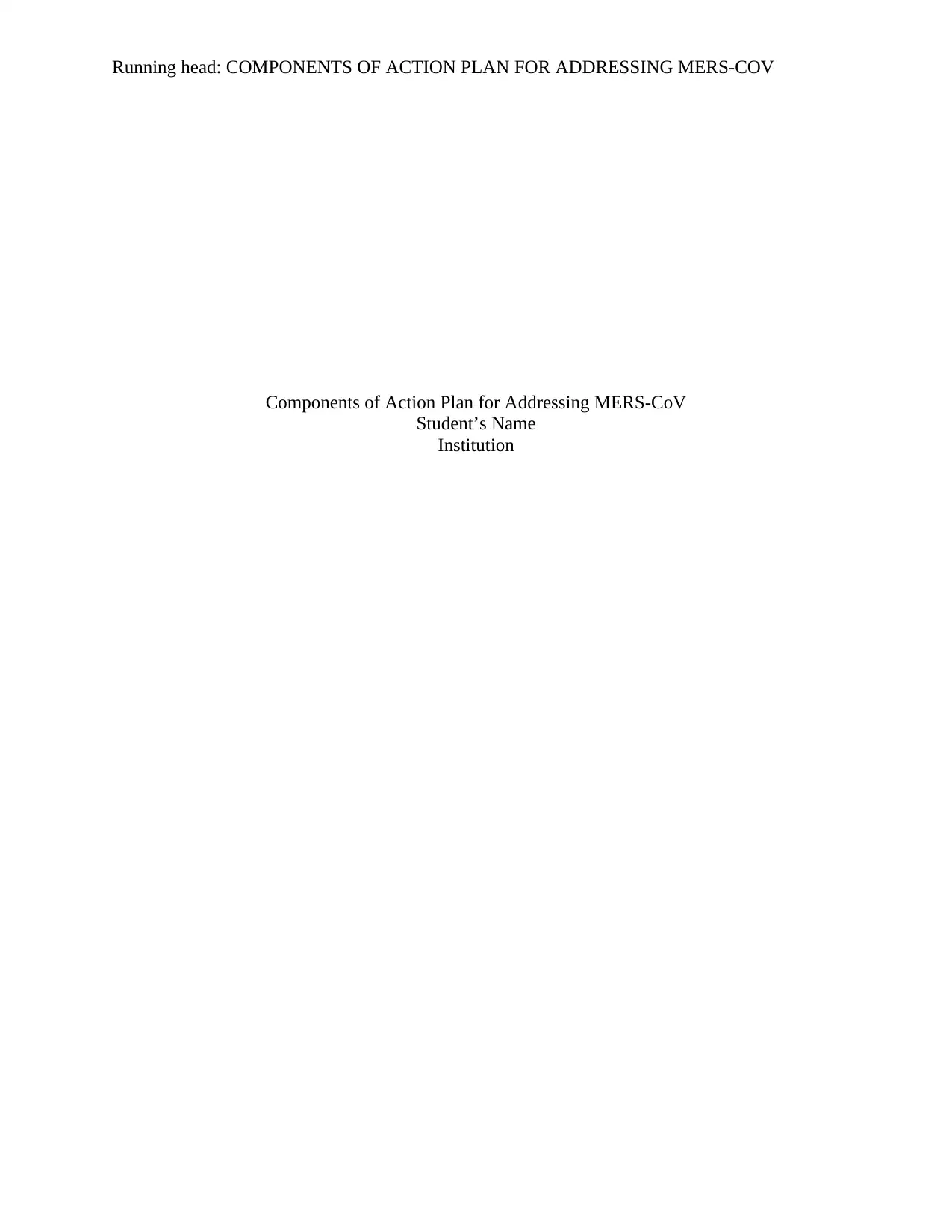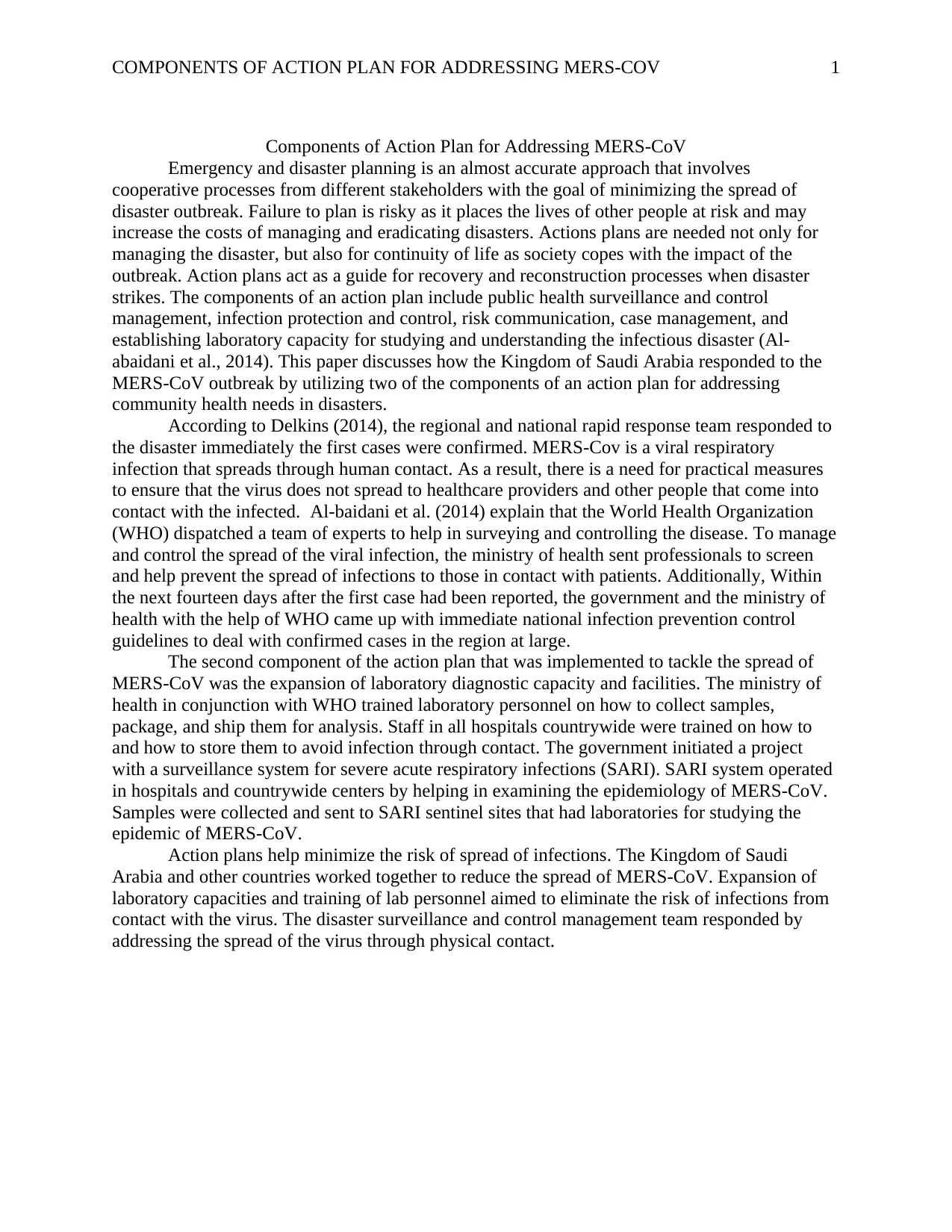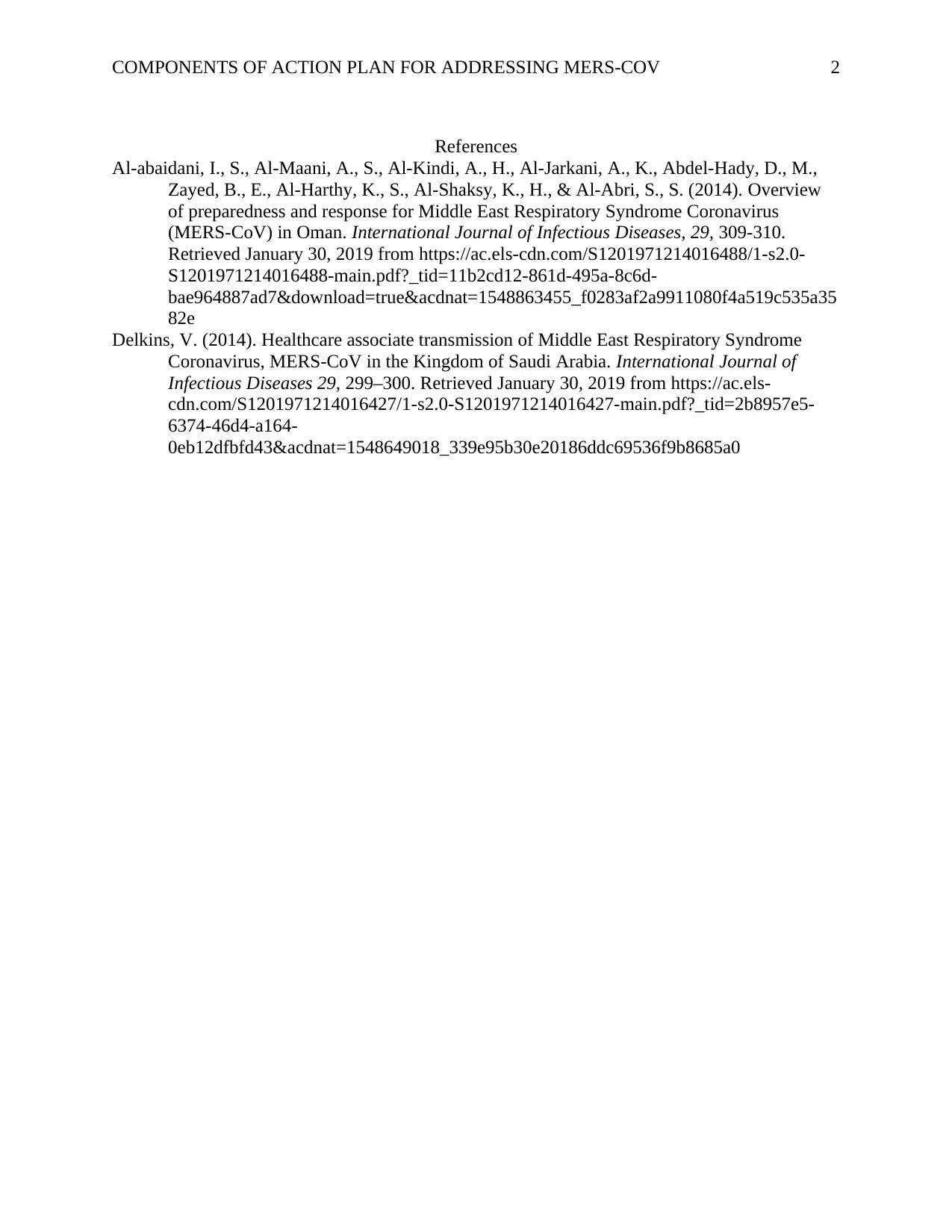MERS-CoV: Action Plan Components for Addressing Community Health Needs
VerifiedAdded on 2023/04/24
|3
|740
|495
Report
AI Summary
This report examines the components of an action plan implemented by the Kingdom of Saudi Arabia to address the MERS-CoV outbreak and its impact on community health. It highlights two key components: public health surveillance and control management, and the expansion of laboratory diagnostic capacity. The response involved the deployment of rapid response teams, development of national infection prevention control guidelines, and training of healthcare personnel in sample collection and handling. The establishment of a surveillance system for severe acute respiratory infections (SARI) and the training of laboratory personnel were crucial in understanding the epidemiology of MERS-CoV and minimizing the risk of infection spread. The collaborative efforts between the Saudi Ministry of Health, the World Health Organization (WHO), and other countries played a vital role in controlling the spread of the virus.
1 out of 3





![[object Object]](/_next/static/media/star-bottom.7253800d.svg)